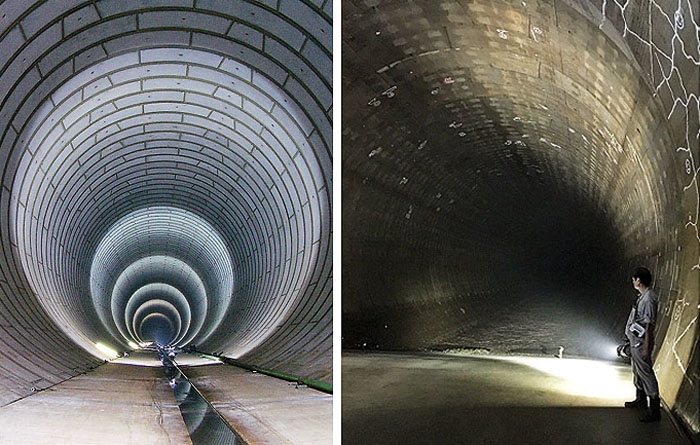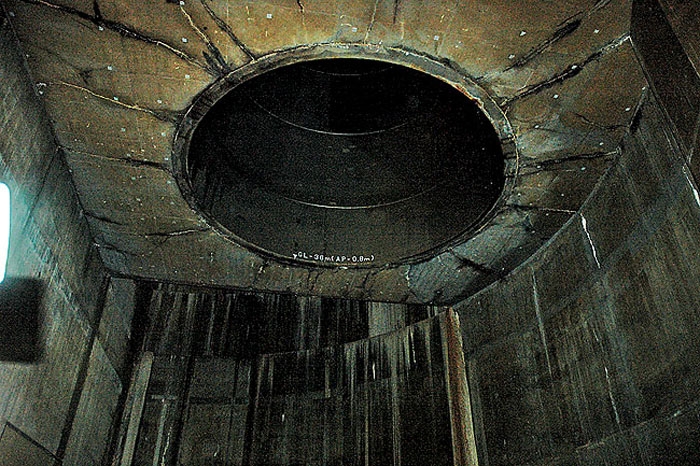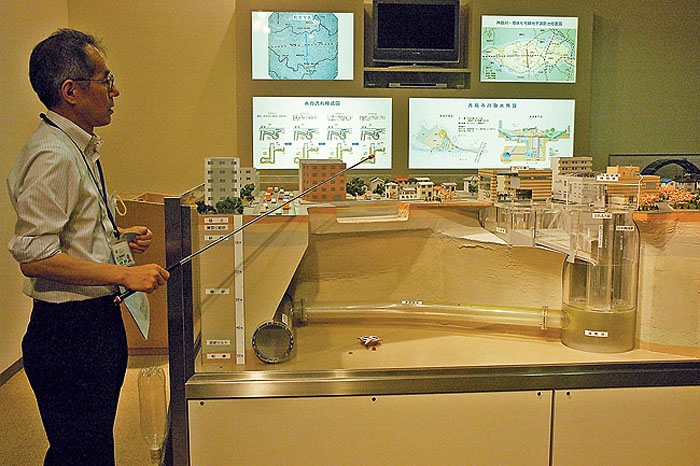How Tokyo deals with inundation

(left:The underground tunnel of the Kanda River/Loop No 7 Underground Regulating Reservoir after its completion (right)A personnel of the facility shines his flashlight into the dark depths of the tunnel during the media tour
Khairuniza In Tokyo, Japan
FLOODS can cause a great deal of damage to populated areas, especially if these areas are also situated nearby or within the basin of a river system.
In Japan, two cities and 13 districts lie within the Kanda River basin (also known as the Kanda River System), which is about 24.6km in length and branches off into multiple rivers within the basin.
The entire length of the river also lies within Tokyo.
In the past before the areas within the basin were urbanised, floods posed little threat as there were fields to absorb the water back into the soil.
But as urbanisation took off and the fields were paved to make way for roads and residential areas, the overflow of water from the Kanda River could not be absorbed back into the ground as easily.

Water from the overflowed rivers are flushed into the underground reservoir through here
In September 1958, the Kanogawa Typhoon caused major flood damage in the Kanda River System with 1,194 hectares of land and 38,356 houses inundated.
There were several other major flood damages caused by typhoons and overflowing of the river throughout the years and in response, the Bureau of Construction Tokyo Metropolitan Government built a regulating reservoir in a section of an underground river known as the ‘Loop Road No 7 Underground River’ project.
The project, which took 20 years to complete – the first 10 years for ‘Stage 1’ and the latter 10 years for ‘Stage 2’ – involved the construction of a 4.5km long underground tunnel with a 12.5m inner diameter beneath the area of Loop Road No 7 that can store approximately 540,000 cubic metres of floodwater taken from three intake facilities on the Kanda River, Zenpukuji River and Myoshoji River.
The Kanda River/Loop Road No 7 Underground Regulating Reservoir comprises three main facilities, the first of which is the Intake Facilities where floodwaters from rivers are gu-ided into the underground tunnel; the Regulating Reservoir Tunnel where the inflowing floodwaters from the Intake Facilities are reserved and temporarily stored and the Control Building, a facility which operates, controls and monitors water inflow and discharge facilities.
On August 27, 1993, Typhoon No 11 caused significant flood damage in the middle basin of the Kanda River, with a total rainfall of 288mm which inundated 85 hectares of land and 3,117 houses.

